You have probably come across that small gadget attached to your key ring. It is just a fob but plays a very significant role in contemporary society, especially with the elevating security concerns.
In this guide, we will explore all the fundamental aspects about key fobs. From benefits, components, classification, to key fob enclosures, you will find all information right here.
Let’s dive right in:
What is a Key Fob?
This is a little piece of hardware that has been programmed and we can useit in controlling several systems such as cars or buildings. These innovations offer an easy way of locking, unlocking, or even starting cars. They enable you to access secure areas without the need to use conventional keys.
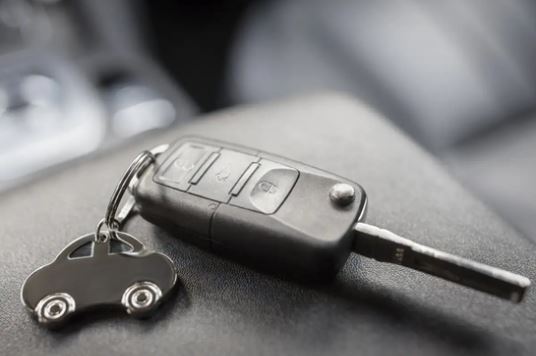
Benefits ofa Key Fob
Key fobs can provide you with so many benefits that a regular key would not while still giving you the base level of functionality of a key. Let us analyze some of the outstanding advantages of key fobs:
- Convenience: with a key fob, you will only need to press the buttons on your key fob and your car or door unlock. This is very useful especially if you are multitasking or have a lot in your hands.
- Enhanced Security: most key fobs employ what we call rolling codes or encrypted signals. This makes it extremely difficult for criminals to crack them compared to traditional keys.
- Remote Access: it allows for remote functions. An example is unlocking or starting your car at the convenience of your house or a distance.
- Multi-Functionality: contemporary key fobs are designed with a wide array of capabilities that are beyond unlocking cars or buildings.You can use them to set or turn off alarms, open or close garage doors, and get status updates about your car.
- Customization: some key fobs enable you to program particular functions into them based on your operation requirements.
History and Evolution of Key Fobs
The process of creating key fobs started in the 1980s as portable devices for entry into cars, commonly known as remote keyless entry (RKE) systems. For starters, these systems were kind of primitive and could only handle basic locking and unlocking functions.
Rapid advancements in technology-enabled various technologies to be incorporated into the key fob. The 1990s saw them integrated with transponder chips that made it almost impossible to steal a car.
Proximity sensors were added in the 2000s to further enhance convenience such as keyless start and stop of the car’s engine, and keyless entry. Modern key fobs are now much more than simple car remotes with various access control features such as push-button start or even vehicle self-parking.
Components of A Key Fob
After shedding some light on what a key fob is, let us now explore what it comprises. Here are some of the main components
- Microcontroller: they manage all communication protocols of the fob by receiving and transmitting signals. They are like the nerve of the key fob since they regulate all the inputs and outputs.
- Transmitter: responsible for communicating signals using radio frequency (RF) from the key fob to the receiver. This enables the signal to get to your car or access control system irrespective of the obstacles.
- Receiver:you will find this component in advanced key fobs that enable it to achieve two-way communication. They can receive confirmation signals in the form of remote feedback that includes the vehicle status.
- Battery: it is a small coin cell battery that provides the components of the key fob with power. Their lifespan ranges based on the battery type and can be between a year to three.
- Buttons: usually located on the surface of the key fob and can either be physical or capacitive buttons. The key presses you make are detected by the microcontroller which then transmits the proper signal for action.
- Antenna: its purpose is transmitting and receiving signals through radio frequency. They increase the signal area coverage of the key fob and signal quality of the key fob.
- RFID/NFC Chip: the near-field communication technology enables you to unlock and start a car using a push button when it is to the reader. Facilitates easy access by allowing operations without much physical input.
- Memory: It stores the key fob codes and programming protocols that are unique to only it. This non-volatile memory is capable of storing data that remains intact even when you remove the battery.
- LED Indicator: it simply displays when you have clicked a button or the battery low status. It improves usability since it reassures you that the key fob is operating as it should.
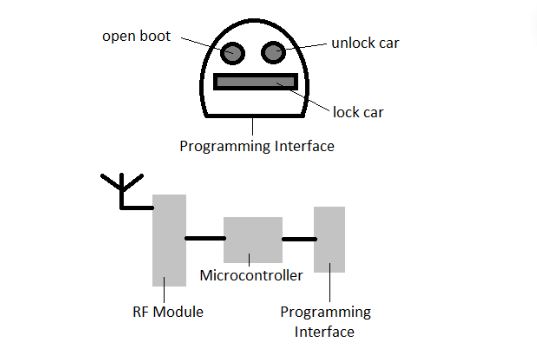
Operating Principle ofa Key Fob
All key fobs operate using the radio frequency (RF) technology. Let us have a look at the step-by-step procedure of how this system works:
- Signal Transmission: the moment you press any button on your key fob, a coded signal in the form of RF is produced. It is immediately transmitted to the receiver located in the car or an access system.
- Authentication: the receiver checks the code to confirm whether it corresponds with the pre-conditioned codes. This security measure prevents any unauthorized access.
- Action Activation: after identification and verification, the receiver complies with the requested command. It actuates the action such as opening the door or starting your engine.
Types of Key Fobs
You can find various types of key fobs available in the market, each having its specific use. We can delve into some of the main types including:
Remote Key Fobs:
Arguably the most widely used in the automotive industry. They serve the basic functions of locking and unlocking your car doors and trunks.
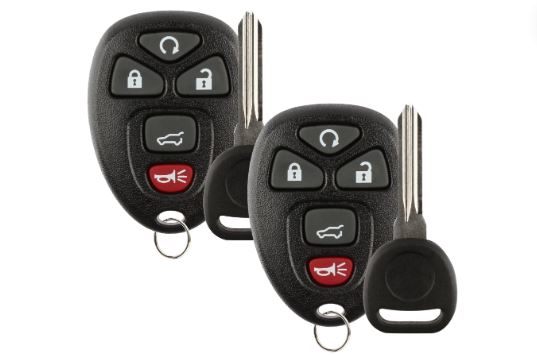
Proximity Key Fobs:
They are integrated with either radio frequency identification (RFID) or near field communication (NFC) technologies. They enable you to access your car or building when near or start your car using a push button.
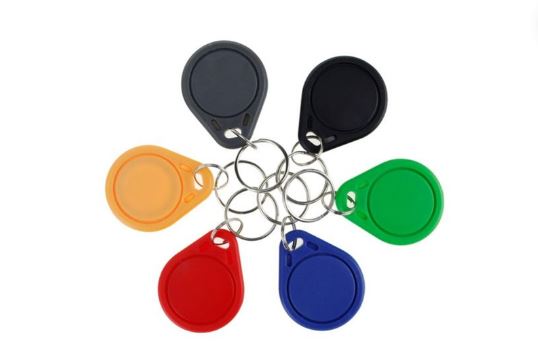
Smart Key Fobs:
They are more sophisticated and may incorporate technologies such as biometric access and touch controls amongst others.
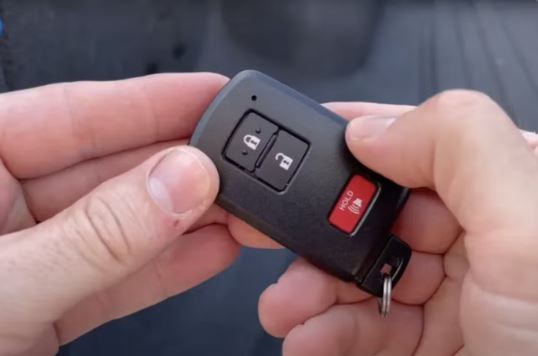
Access Control Fobs:
They operate using either RFID or magnetic technology. We normally apply them in buildings to provide or restrict access to the facilities.
Types of Key Fob Enclosures
With the various key fobs available in the market with their many applications, you will find them placed in different enclosures.
Like electrical enclosures, key fob enclosures come in many designs and configurations:
- Standard Plastic Enclosures: one of the most common enclosures in use since it is affordable and easy to carry due to its lightweight.
- Rubberized Enclosures: they can offer you an increased grip with better shock protection. Suitable for rough environment applications.
- Metal Enclosures: they feature high abrasion and are usually heavy. Commonly used in luxury cars and smart products operated using key fobs.
- Waterproof Enclosures: designed to fully cover the key fob and protect it from water damage. It is suitable for outdoor and marine applications.
- Silicone Enclosures: they are normally water-repellent and can offer excellent shock absorbency due to their soft and easily deformable nature.
Challenges ofa Key Fob
Despite their numerous benefits, key fobs also come with their fair share of challenges such as:
- Getting a low battery charge may cause some key fobs to develop issues
- In as much as they are secure, they may be subjected to relay attacks and hacking if appropriate measures are not taken.
- They are not compatible to support all systems and sometimes you may need an upgrade of your vehicle access control system.
- It will cost you a lot to replace or repair a damaged key fob especially if you are dealing with high-end vehicles.
Applications Of A Key Fob
Key fobs are incredibly versatile and we can put them into use in various applications. They include:
- Automotive: they are mainly used to lock or unlock car doors, keyless starting and switching off engines, and to arm or disarm car alarm systems.
- Residential: used in operating home garage doors, automatic gates, and in some instances burglar alarms.
- Commercial: control access to offices, certain floors, or other closed areas of the building or premises.
- Hospitality: applied in hotels to access rooms and other amenity facilities within it.
Choosing the Right Key Fob
When opting for the right key fob, you need to factor in various aspects as well as your operational requirements. Here are some of the pointers you can base your choice on:
- Purpose: decide whether you require an automotive, residential, or commercial garage door opener key fob.
- Features: determine those that your application can’t function without such as proximity sensing, remote engine start/stop, or even biometric operations.
- Compatibility: make sure the key fob you go for works with your car or access system.
- Durability: select an enclosure that best serves your application area such as waterproof for outdoors.
- Cost: look at the cost and any other additional functions that are related to the cost.
- Security: settle for a key fob with the highest levels of encryption to avoid hacking.
Conclusion
These miniature devices have become extremely crucial when it comes to protection and the operation of cars, houses, and offices. If you are interested in improving the protection of your vehicle or managing access to premises, then consider all the possibilities and benefits connected with key fobs.
More resources:
IP Enclosure – Source: KDM
NEMA Rating Enclosure – Source: KDM




